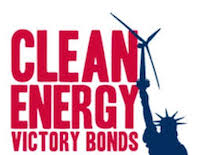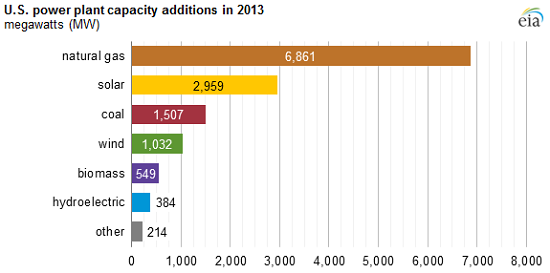 Several groups have been promoting clean energy victory bonds, a throwback from World War II. This week the concept gained support as the House of Representatives as the Clean Energy Victory Bonds Act of 2014. The Treasury bonds starting as low as $25 will allow Americans to invest in the country’s clean energy future.
Several groups have been promoting clean energy victory bonds, a throwback from World War II. This week the concept gained support as the House of Representatives as the Clean Energy Victory Bonds Act of 2014. The Treasury bonds starting as low as $25 will allow Americans to invest in the country’s clean energy future.
The bill was introduced by U.S. Reps. Zoe Lofgren (D-Cali.) and Doris Matsui (D-Cali.) and includes 14 co-sponsors and is endorsed by Green America and the American Sustainable Business Council, which together represent half a million consumers, companies, organizations, and investors.
Todd Larsen, corporate responsibility division director for Green America, said, “This bond is modeled after the successful WW II Victory Bond which millions of Americans purchased. The Clean Energy Victory Bond will provide individual and institutional investors with the opportunity to invest in clean energy sectors such as solar, wind, second generation biofuels, electric vehicles, and residential and commercial energy efficiency programs. There are currently few investment opportunities for the average investor interested in supporting the shift to a clean energy economy so this bond fills a need for both investors and industry.”
 According to Green America and the American Sustainable Business Council, Clean Energy Victory Bonds will create the following major benefits:
According to Green America and the American Sustainable Business Council, Clean Energy Victory Bonds will create the following major benefits:
- Leverage $50 billion investment to provide up to $150 billion in public and private financing to fund the production of innovative energy technologies, at a time when the U.S. is falling behind other countries in clean energy manufacture and installation.
- Help create at least one million competitively-paying jobs in the U.S.
- Support America’s clean energy sector, helping to ensure that the U.S. remains a world leader in this increasingly crucial and competitive industry.
- Reduce U.S. dependence on foreign sources of energy, enhance national security, and limit price increases and fluctuations.
- Provide a secure, competitive, government-backed investment vehicle for average Americans and investment institutions alike seeking a safe place for their money.
- Offer flexible redemption options at interest rates superior to most bank accounts.
- Help all Americans to invest in the future of their country and benefit from their investments.
- Promote a cleaner environment through the financing of clean energy technologies.
- Protect the health and safety of Americans by reducing local air and water pollution throughout the country.
“From a business perspective, the Clean Energy Victory Bond makes great sense,” said Richard Eidlin, co-founder & policy director, American Sustainable Business Council. “The clean energy industry has not had the steady flow of financial support that investors and business need to plan effectively, resulting in investors often deciding to place their investments overseas rather than in the U.S.”
Tax incentives for renewable energy come and go, often without predictability, leaving investors and industry scrambling. The Clean Energy Victory Bond would extend vital tax credits for a decade, giving emerging industries the support they need to develop and become increasing competitive.
 Our latest ZimmPoll asked the question, “What’s the largest percentage of your 2014 marketing budget?”
Our latest ZimmPoll asked the question, “What’s the largest percentage of your 2014 marketing budget?”











